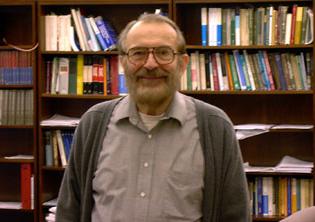It is with great sadness that we heard of the sudden death of Paul Schleyer on 21 November 2014.

Paul started out as a physical organic chemist. His early contributions include the discovery of a novel synthesis of adamantane and other cage molecules, the elucidation of organic reaction mechanisms, especially for solvolysis and carbocation rearrangements, and insightful studies on conformational analysis and hydrogen bonding. He provided objective evidence that the 2-norbornyl cation is non-classical. In the 1970s he moved into computational chemistry and became a pioneer in this field who convinced many experimental colleagues of the merits of computation.
On the basis of reliable theoretical calculations, he improved our understanding of chemical bonding and of concepts such as aromaticity, hyperconjugation, and strain. He introduced nucleus-independent chemical shifts as a widely adopted aromaticity criterion. Through computation he discovered many novel molecular structures, including unconventional lithium species and electron deficient systems. His computational research covered a broad range of topics from all of chemistry.
Paul was a true pioneer in computational chemistry. He helped change and reshape the direction of chemical research by demonstrating the predictive value of computations and the synergy between experiment and theory in chemistry.
Paul received his Ph.D. degree from Harvard in 1957. He was Eugene Higgins Professor of Chemistry at Princeton University (1969-1976), Professor of Organic Chemistry at the University of Erlangen (1976-1998), and Graham Perdue Professor of Chemistry at the University of Georgia (since 1998). He was among the founders of WATOC and served as President of WATOC from 1990 to 1996.
Paul's outstanding contributions to the field of computational chemistry are known to everyone associated with WATOC. We will miss him dearly.
